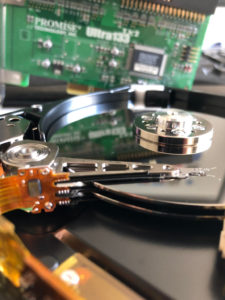There are many ways to harden a Docker container, one is to make the container layer read-only.
This might be a marginal improvement to security, first your application should not run as root or has special privileges (e.g. CAP_DAC_OVERRIDE), so there is limited risk that an attacker exploiting a vulnerability of your application can modify sensitive applications. However, if you install your application within a Dockerfile as the application user (e.g. using bundle install) make the base layer read-only might protect it from unwanted modification.
I also like the idea of an immutable base layer and clearly identifying the writing data and if they should be persisted or not. I also relate that to security, because the better you know the behaviour of an application, the better you can adapt a confinement for it.
Setting the base layer read-only is somewhat challenging. Setting a container image to read-only is simple, there is a --read-only flag to the docker run command. But identifying which data is written by the containerised application can be a challenge One task is thus to identify all written data and defining of they should be persisted in a volume or not persisted. In the latter case, one could then use a tmpfs volume or a local volume (in a Swarm cluster).
We are going to use Docker layering approach to identify the written data. How to check the difference varies depending on the storage backend and they are too numerous for me to list each cases, I might complete the article in the future but today I will show how to use the BTRFS and Overlay2 backend.
What I am going to explain is based on the current implementation of the Docker storage backend as described in their respective guides. Each guide explains how the backend works, and by extracting that information I could find a way to compare the layers.
Continue reading “How to make a Docker container read-only”









 – you are used to create application that will run in the background (as a service) under a dedicated user and for which you need to handle the permissions for the data this application might need to use. So introducing containers (without user namespaces) should not bring any surprise here, it is part of the expectations. But you will see later that you can still be bitten by some edge cases from the container implementation.
– you are used to create application that will run in the background (as a service) under a dedicated user and for which you need to handle the permissions for the data this application might need to use. So introducing containers (without user namespaces) should not bring any surprise here, it is part of the expectations. But you will see later that you can still be bitten by some edge cases from the container implementation.

